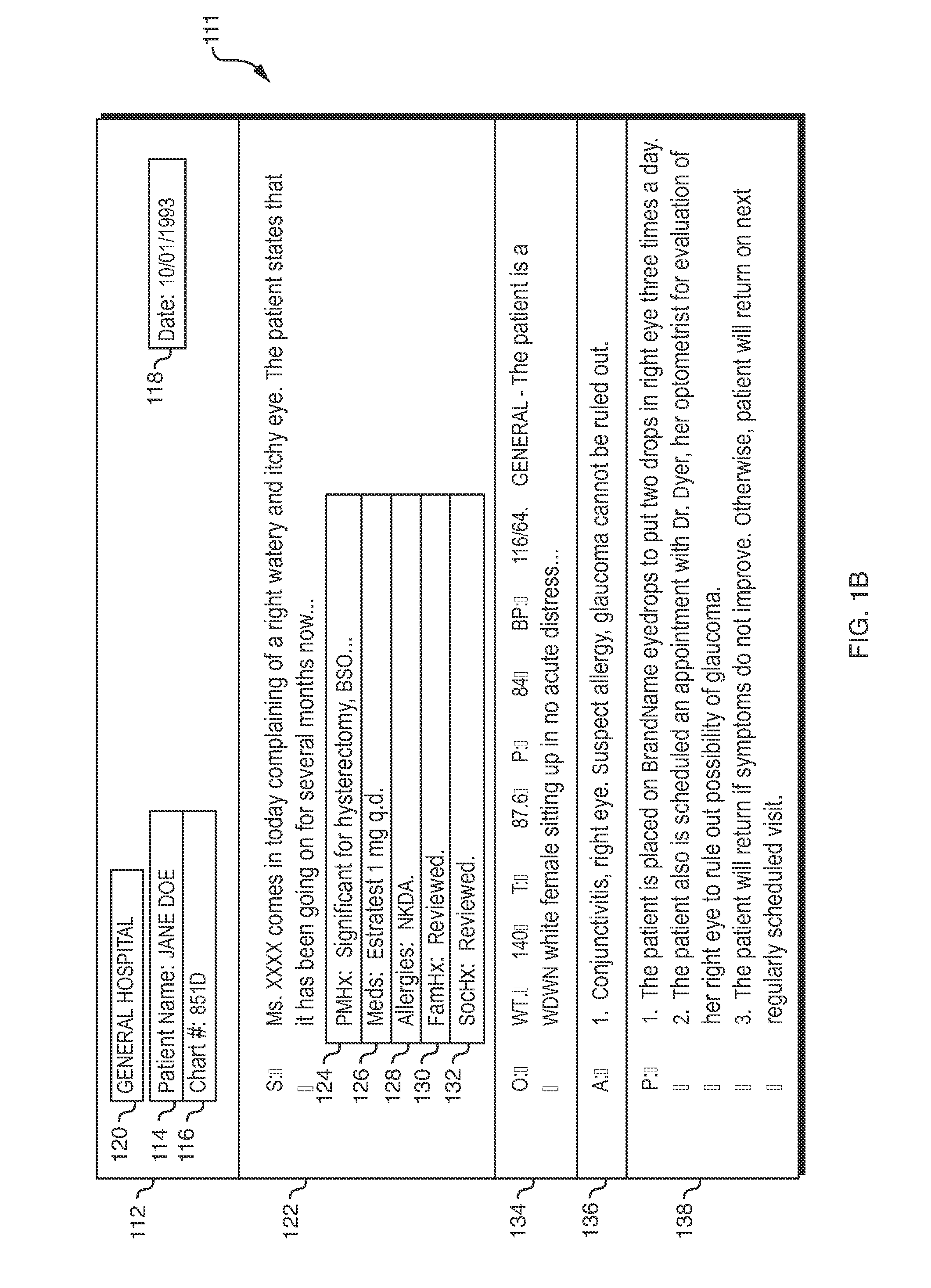Automated Extraction of Semantic Content and Generation of a Structured Document from Speech
a semantic content and structured document technology, applied in the field of automatic speech recognition, can solve the problems of difficult to obtain consistent high-grade reliability, low degree of reliability, and low degree of reliability, and achieve the effect of not wanting verbatim transcripts, and reducing accuracy
- Summary
- Abstract
- Description
- Claims
- Application Information
AI Technical Summary
Benefits of technology
Problems solved by technology
Method used
Image
Examples
Embodiment Construction
[0049]Referring to FIG. 2, a flowchart is shown of a method 200 that is performed in one embodiment of the present invention to generate a structured textual document based on a spoken document. Referring to FIG. 3, a dataflow diagram is shown of a system 300 for performing the method 200 of FIG. 2 according to one embodiment of the present invention.
[0050]The system 300 includes a spoken audio stream 302, which may, for example, be a live or recorded spoken audio stream of a medical report dictated by a doctor. Referring to FIG. 4, a textual representation of an example of the spoken audio stream 302 is shown. In FIG. 4, text between percentage signs represents spoken punctuation (e.g., “% comma %”, “% period %”, and “% colon %”) and explicit structural cues (e.g., “% new-paragraph %”) in the audio stream 302. It may be seen from the audio stream 302 illustrated in FIG. 4 that a verbatim transcript of the audio stream 302 would not be particularly useful for purposes of understandi...
PUM
 Login to View More
Login to View More Abstract
Description
Claims
Application Information
 Login to View More
Login to View More - R&D
- Intellectual Property
- Life Sciences
- Materials
- Tech Scout
- Unparalleled Data Quality
- Higher Quality Content
- 60% Fewer Hallucinations
Browse by: Latest US Patents, China's latest patents, Technical Efficacy Thesaurus, Application Domain, Technology Topic, Popular Technical Reports.
© 2025 PatSnap. All rights reserved.Legal|Privacy policy|Modern Slavery Act Transparency Statement|Sitemap|About US| Contact US: help@patsnap.com



